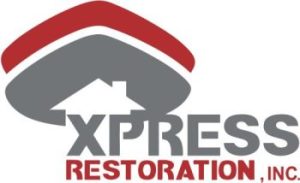Water Damage Solutions for Kitchen Leaks You Can Trust
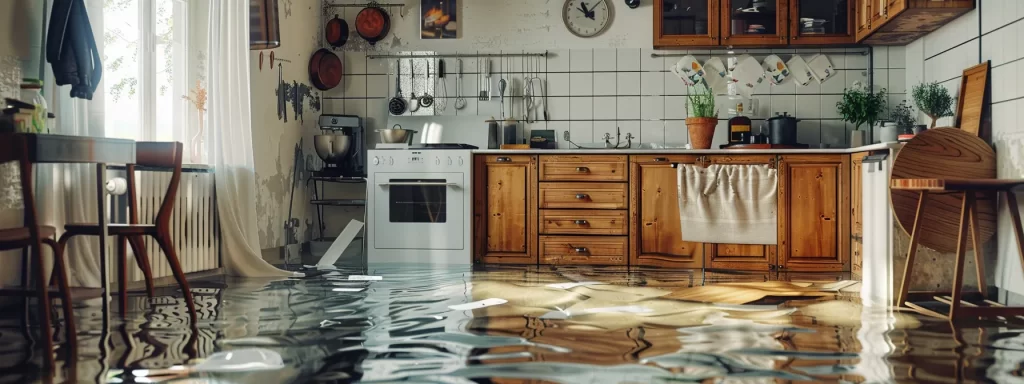
Water Damage Solutions for Kitchen Leaks
Water damage in the kitchen often goes unnoticed until it’s too late. Early signs, such as stains on cabinets or a musty smell, can indicate hidden leaks that cause significant damage. This article will explore how to identify these signs, common causes of water intrusion, and effective restoration steps for kitchen cabinets. By reading this content, homeowners will learn to protect their kitchens from future leaks, ensuring a safe and dry environment. Addressing water damage issues promptly can save time and money, preventing larger problems down the line.
Key Takeaways
- Early detection of moisture damage can prevent extensive kitchen repairs and restoration costs
- Musty odors often indicate hidden moisture, warranting immediate investigation and possible remediation
- Regular inspections of plumbing and appliances help identify potential leaks before they escalate
- Professional restoration services are vital for managing significant water damage and mold growth
- Understanding insurance coverage is critical for homeowners facing water damage claims and repairs
Identifying Water Damage Signs on Kitchen Cabinets Early
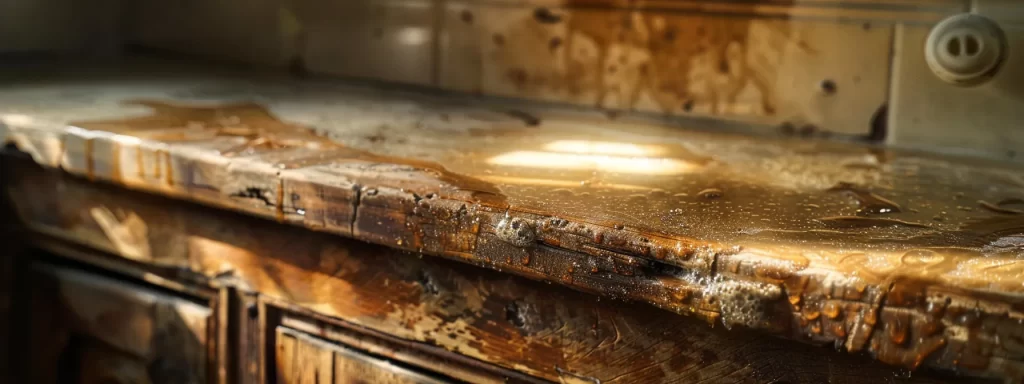
Visual cues, such as moisture damage on wood and laminate, can indicate kitchen leaks requiring expert remediation. Detecting musty odors often points to hidden moisture, compromising food safety and indoor air quality. Checking for warping, swelling, or discoloration and feeling for soft spots can ensure structural integrity. Each of these signs will be further explored to aid in effective damage assessment and solutions.
Visual Cues of Moisture Impact on Wood and Laminate
Moisture damage on kitchen cabinets often manifests as visible changes to wood and laminate, such as stains, discoloration, or warping. Identifying these signs early can prevent extensive damage, which may require emergency intervention from restoration specialists. Employing a dehumidifier in the kitchen can also help manage humidity levels, making it easier to repair water damage before it worsens, particularly around countertops that may be soaking up excess moisture.
Detecting Musty Odors Indicating Hidden Moisture
Detecting musty odors in a kitchen is often a clear sign of hidden moisture, which can lead to significant issues, especially around areas like the sink. This odor may indicate that plywood or other materials in the cabinets are absorbing excess water due to leaks. Addressing these odors swiftly is essential in managing commercial water damage effectively and preventing further deterioration of the cabinetry and surrounding structures.
Checking for Warping, Swelling, or Discoloration
Checking for warping, swelling, or discoloration on kitchen cabinets is critical in identifying water damage early. These changes often signal that moisture is present, leading to potential corrosion of materials. Additionally, if not addressed promptly, this could create an environment conducive to mold growth, necessitating professional mold removal services. Homeowners should remain vigilant not only in kitchens but also in bathrooms, as bathroom leaks can likewise contribute to similar damage. Recognizing these signs enables timely interventions, reducing the risk of extensive repairs or smoke damage restoration later on.
Feeling for Soft Spots or Structural Weakness
Feeling for soft spots or structural weakness in kitchen cabinets can reveal the presence of moisture damage. Homeowners should gently press on various areas of the cabinetry, particularly near plumbing drains or where refrigerants may be present, as these are common sources of leaks. Finding any give in the material can indicate compromised integrity, urging immediate attention to prevent further water damage or the need for more extensive storm damage restoration efforts.
| Signs of Water Damage | Description |
|---|---|
| Soft Spots | Indicates potential moisture damage and structural weakness. |
| Warping | Visible deformities that signal the presence of excess moisture. |
| Musty Odors | Suggest hidden moisture in cabinetry, often from leaks. |
| Discoloration | Stains or color changes on surfaces indicating water damage. |
Common Causes of Water Intrusion Affecting Kitchen Cabinets
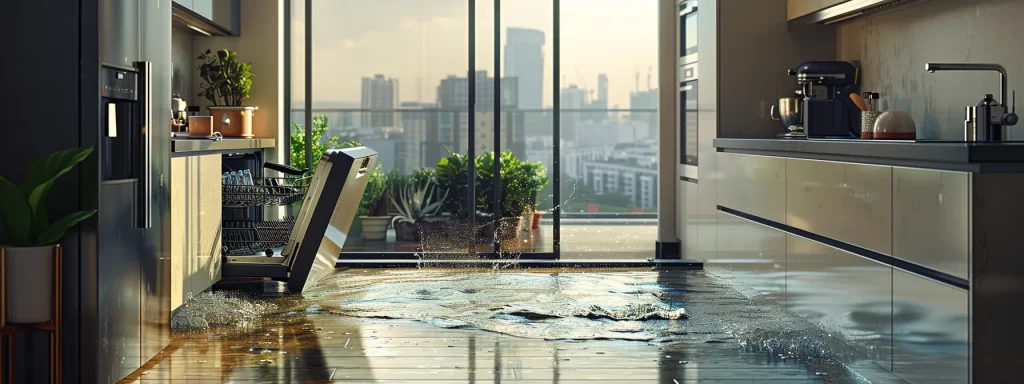
Leaks from sinks, faucets, and supply lines often initiate water damage in cabinetry. Malfunctioning dishwashers and refrigerators can exacerbate the situation, while pipe bursts within walls can lead to severe issues adjacent to kitchen cabinets. Additionally, spills and appliance overflows can significantly contribute to this damage, highlighting the importance of prompt water extraction and restoration water damage services to ensure safety and prevent extensive repairs.
Leaks From Sinks, Faucets, and Supply Lines
Leaks from sinks, faucets, and supply lines are common culprits of water damage in kitchen cabinets. A malfunctioning dishwasher can exacerbate these issues, leading to a hazardous situation if not addressed promptly. Homeowners should prioritize regular inspections of plumbing components to catch leaks early and consider professional water damage repair to mitigate potential storm damage that could arise from plumbing failures. Taking swift action can prevent further complications and ensure a safe, dry kitchen environment.
Malfunctioning Dishwashers and Refrigerators
Malfunctioning dishwashers and refrigerators stand out as significant contributors to water damage in kitchen cabinets. These appliances can develop leaks or improper seals, causing water to pool or seep into cabinetry materials. Timely intervention, through regular inspections or emergency service, can mitigate potential renovation costs associated with extensive water damage cleanup.
| Common Causes of Water Intrusion | Description |
|---|---|
| Malfunctioning Dishwashers | Leaks from dishwashers can lead to moisture buildup, affecting cabinet integrity. |
| Faulty Refrigerators | Water from refrigerators may seep into cabinetry, causing damage. |
| Improper Seals | Seals that are worn or damaged can allow water to escape. |
| Overflows | Excess water from spills can necessitate quick water damage cleanup. |
Pipe Bursts Within Walls Adjacent to Cabinetry
Pipe bursts within walls adjacent to cabinetry can cause significant kitchen water damage, often going unnoticed until substantial flooding occurs. Regular inspection of plumbing systems is essential to identify potential weaknesses that may lead to such incidents. When a pipe fails, it can quickly saturate surrounding materials, necessitating immediate water restoration efforts to prevent lasting damage.
- Regular inspection to find weak pipes
- Monitoring for signs of leaks
- Importance of prompt water restoration
- Consequences of flooding from pipe bursts
Spills and Appliance Overflows Contributing to Damage
Spills and appliance overflows often serve as significant contributors to water damage in kitchen cabinets. Common incidents, such as a boiling pot of water, can lead to quickly flooded floors, allowing moisture to penetrate cabinetry and promote mildew growth. To mitigate these risks, homeowners should ensure proper ventilation when using appliances and promptly clean up any spills, preventing water from accumulating and causing further damage.
| Causes of Water Damage | Description |
|---|---|
| Spills | Accidental spills can lead to moisture accumulation, risking cabinet integrity. |
| Appliance Overflows | Malfunctions can result in excess water, affecting cabinets and flooring. |
| Mildew Growth | Excess moisture can create conditions for mildew, compromising health. |
| Improper Ventilation | Insufficient airflow can exacerbate moisture problems, leading to floods. |
Steps for Effective Water Damage Restoration for Kitchen Cabinets
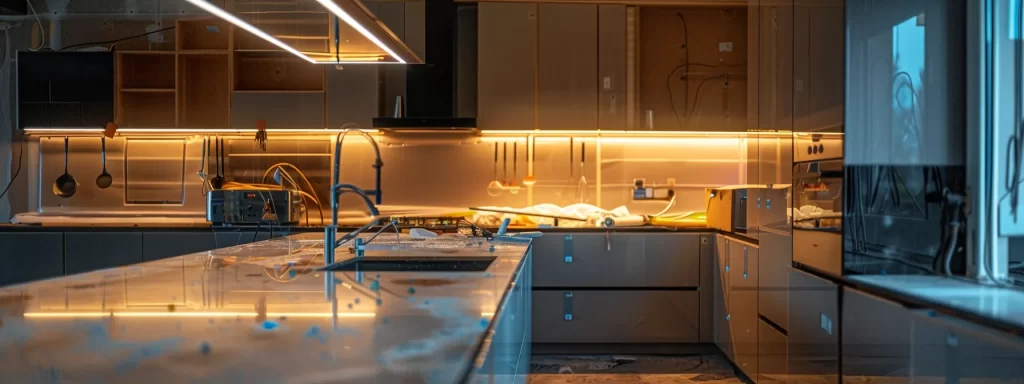
Taking immediate actions following the discovery of water exposure is essential for effective water damage restoration in kitchen cabinets. Drying techniques suited for various cabinet materials help mitigate moisture issues, while cleaning and sanitizing affected surfaces are crucial for maintaining indoor air quality and reducing allergens. Additionally, homeowners must assess whether minor repairs are sufficient or if full replacement is necessary, along with evaluating the structural integrity after restoration efforts.
Immediate Actions Following Water Exposure Discovery
Upon discovering water exposure due to a kitchen flood or a leak, immediate actions are vital to minimize damage. Homeowners should quickly identify the source of water leaking and shut off the water supply to prevent further intrusion. Utilizing waterproofing techniques along with antimicrobial solutions to clean and sanitize affected areas helps in restoring kitchen cabinets effectively and ensuring a healthy living environment.
Drying Techniques Suitable for Cabinet Materials
Effective drying techniques are critical in addressing water damage in kitchen cabinets. Homeowners can use fans and dehumidifiers to reduce humidity levels, which helps prevent water damage from progressing and minimizes the risk of mold growth. Monitoring moisture levels in the walls and cabinets during the drying process ensures that all affected areas are properly treated, paving the way for successful mold remediation if needed:
| Drying Techniques | Description |
|---|---|
| Fans | Utilizing fans helps circulate air, speeding up the drying process for cabinets. |
| Dehumidifiers | These devices extract moisture from the air, improving drying efficiency. |
| Moisture Meters | Monitoring tools to check for remaining moisture in cabinet materials. |
| Antimicrobial Solutions | Applied after drying to prevent mold and maintain a safe environment. |
Cleaning and Sanitizing Affected Cabinet Surfaces
Cleaning and sanitizing affected cabinet surfaces is a critical aspect of restoring kitchen spaces after a leak. Utilizing appropriate cleaning solutions helps eliminate contaminants that may contribute to air pollution and potential health risks. For optimal results, homeowners should consider employing professional restoration services, such as those offered by Servpro, which can effectively address issues related to moisture and ensure surfaces are treated with antimicrobial agents sufficient for preventing mold growth.
- Identify the source of water damage.
- Shut off the valve to prevent further leakage.
- Remove any damaged materials.
- Clean and sanitize affected surfaces.
- Monitor moisture levels to ensure complete drying.
Repairing Minor Cabinet Damage Versus Full Replacement Needs
Determining whether to repair minor cabinet damage or undertake a full replacement in a water damaged kitchen hinges on the extent of the issues discovered. Minor damage, such as superficial stains or slight warping, can generally be remedied through thorough water removal and effective damage restoration techniques, allowing homeowners to avoid the costs associated with a kitchen remodel. However, if mold damage is evident or structural integrity is compromised, a complete cabinet replacement may be necessary to ensure safety and enhance the kitchen’s overall functionality.:
- Assess the extent of the water damage.
- Evaluate the possibility of repairing minor issues.
- Consider the implications of mold damage.
- Decide on the necessity of full cabinet replacement.
Assessing Structural Integrity After Restoration Efforts
After completing water damage restoration efforts, it is crucial to assess the structural integrity of kitchen cabinets to ensure they can withstand future incidents. Homeowners should carefully examine the materials for any signs of weakness or damage, especially around the seams and connections. Utilizing tools such as pumps and vacuums to remove any residual moisture will further help in determining the stability of the cabinets, particularly for stainless steel fixtures that require thorough dry-out to prevent corrosion:
- Identify any lingering moisture.
- Check for visible damage to cabinet structures.
- Monitor for any warp or discoloration.
- Ensure stainless steel elements are dry to prevent corrosion.
- Test the strength of the cabinetry to confirm stability.
Strategies to Minimize Future Water Damage Risk in Kitchens

Implementing proactive measures can significantly reduce the risk of water damage in kitchens. Regular inspection of plumbing fixtures and appliances helps identify potential leaks early. Installing water leak detection sensors near cabinets provides immediate alerts. Using water-resistant materials during renovations minimizes moisture absorption. Proper sealing around sinks and countertops ensures protection, while maintaining appliances according to manufacturer guidelines enhances their reliability and performance.
Regular Inspection of Plumbing Fixtures and Appliances
Regular inspection of plumbing fixtures and appliances is essential for preventing water damage in kitchens. Homeowners should examine steel pipes and connections for signs of corrosion or leaks, as even small issues can escalate quickly. Utilizing sealant on joints and fittings can provide an extra layer of protection, while ensuring that sump pumps are functioning properly can help manage excess water during heavy rains. Moreover, keeping an updated insurance policy can safeguard against unexpected repair costs, making proactive maintenance a smart investment in home safety.
Installing Water Leak Detection Sensors Near Cabinets
Installing water leak detection sensors near kitchen cabinets can be a proactive strategy to minimize future water damage risks. These sensors provide early alerts when moisture levels exceed safe thresholds, allowing homeowners to address leaks before they escalate into significant issues. By incorporating these devices into a kitchen’s design, residents can significantly enhance their safety and protect cabinetry from the potentially harmful effects of unnoticed leaks.
Using Water-Resistant Materials During Kitchen Renovations
Using water-resistant materials during kitchen renovations is a proactive approach to minimize future water damage risks. Homeowners can select cabinets, countertops, and flooring made from materials such as marine-grade plywood or vinyl that withstand moisture exposure better than traditional options. Investing in these materials not only enhances the longevity of kitchen elements but also reduces the likelihood of mold growth and extensive repairs, ensuring a safe and functional kitchen space.
Proper Sealing Around Sinks and Countertops
Proper sealing around sinks and countertops is essential for preventing water damage in kitchens. Ensuring that silicone caulk or sealant is applied adequately can create a waterproof barrier that keeps moisture from seeping into joints and gaps. Regularly checking and maintaining these seals will help homeowners avoid costly repairs by proactively identifying potential leaks before they escalate into significant damage.
Maintaining Appliances According to Manufacturer Guidelines
Maintaining appliances according to manufacturer guidelines is crucial for reducing the risk of water damage in kitchens. Regularly following maintenance schedules, such as cleaning filters and checking seals, can prevent leaks that might compromise cabinetry. By ensuring proper operation and timely servicing of dishwashers and refrigerators, homeowners mitigate potential water intrusion that could lead to significant repair costs down the line.
Assessing Cabinet Material Impact on Restoration Success
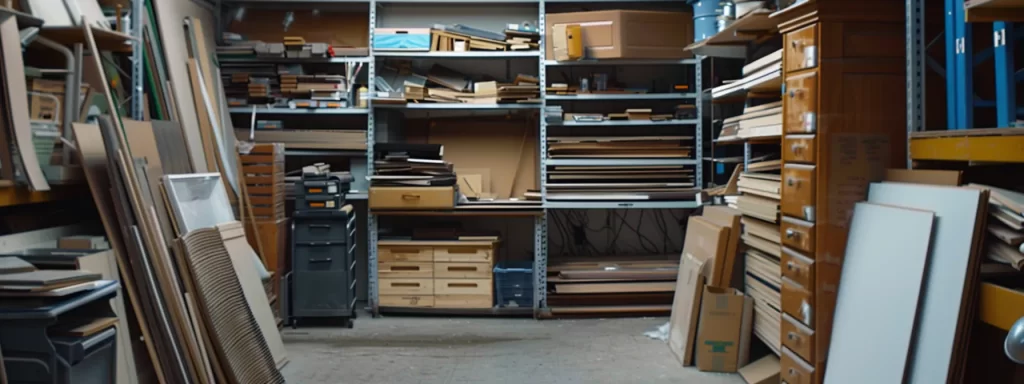
Restoration challenges vary significantly based on the cabinet material affected by water damage. Particle board and MDF cabinets face substantial difficulties in recovery due to their susceptibility to swelling and degrading. In contrast, solid wood cabinetry often has better restoration potential. Plywood reacts differently to moisture exposure, and laminate or veneer surfaces require careful drying techniques to preserve their integrity. Each of these elements plays a crucial role in determining effective restoration strategies.
Challenges With Restoring Particle Board or MDF Cabinets
Restoring kitchen cabinets made of particle board or MDF presents notable challenges due to their composition, which makes them highly susceptible to moisture damage. Even minor water exposure can lead to swelling, warping, and deterioration, often making these materials less salvageable compared to solid wood options. Homeowners expecting a straightforward fix may find that extensive repairs or replacements are necessary, reinforcing the importance of swift action in addressing leaks to minimize long-term damage.
Restoration Potential for Solid Wood Cabinetry
Solid wood cabinetry generally enjoys a favorable restoration potential when exposed to water damage, due to its durable composition. With swift action taken to dry out the affected areas, solid wood can often be salvaged through effective techniques, such as sanding and refinishing to repair any surface damage caused by moisture. Seeking professional restoration services can further enhance the recovery process, ensuring that the cabinetry remains functional and visually appealing after an incident:
- Solid wood offers better recovery options than synthetic materials.
- Prompt drying and refinishing can restore the cabinetry’s look.
- Professional help ensures thorough and safe restoration efforts.
Plywood Cabinet Reactions to Water Exposure
Plywood cabinets react to water exposure by absorbing moisture, which can lead to delamination and deterioration of the adhesive layers. When plywood becomes saturated, it can swell and lose its structural integrity, making it essential for homeowners to address leaks promptly. Utilizing drying techniques and restoration services can significantly improve outcomes, allowing for the salvage of plywood cabinets if dealt with swiftly and effectively.
Laminate and Veneer Considerations During Drying
Laminate and veneer surfaces require careful handling during the drying process to ensure effective restoration after water damage. These materials can be sensitive to moisture, making it easy for water to become trapped beneath their surfaces, leading to further degradation. It is essential to utilize gentle drying techniques, such as air circulation and controlled humidity, to prevent lifting or peeling that may compromise aesthetics and functionality:
| Material | Drying Considerations |
|---|---|
| Laminate | Avoid excess heat which can warp the surface; use fans for air movement. |
| Veneer | Monitor for lifting and ensure even drying to maintain adhesion. |
When Professional Water Damage Restoration for Kitchens Is Necessary
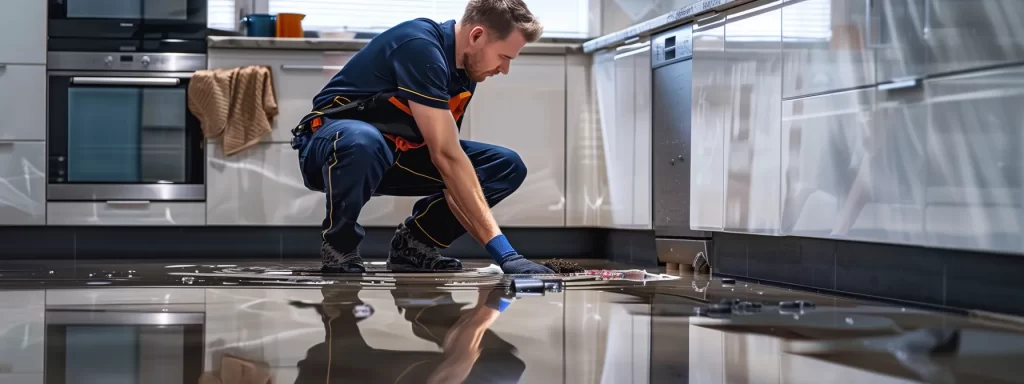
Identifying extensive saturation from kitchen leaks often necessitates professional water damage restoration, especially when simple drying methods fail. Addressing potential mold growth inside cabinet structures is crucial, as is recognizing situations that require specialized drying equipment. Homeowners should also navigate insurance claims for kitchen water damage repairs and seek expert assessments to determine cabinet salvageability and proper solutions.
Recognizing Extensive Saturation Beyond Simple Drying
Recognizing extensive saturation in kitchen cabinets is crucial for determining when professional water damage restoration becomes necessary. If water exposure has persisted for an extended period, simple drying methods may not adequately address the underlying issues, leading to mold growth and structural compromise. Homeowners should be attentive to signs such as peeling laminate, a persistent musty odor, or visible swelling in cabinet materials, as these indicate that specialized restoration services are required to effectively resolve the damage and restore a safe kitchen environment.
Addressing Potential Mold Growth Within Cabinet Structures
Addressing potential mold growth within cabinet structures is critical for ensuring a safe kitchen environment after experiencing water damage. Mold can develop rapidly in damp areas, particularly in hidden spaces within cabinetry. Homeowners should act quickly to not only dry affected areas but also implement professional mold remediation services when necessary to thoroughly eliminate any fungal presence and prevent health risks associated with mold exposure.
Situations Requiring Specialized Drying Equipment
When water damage occurs, certain situations call for specialized drying equipment to effectively restore kitchen spaces. Areas that have absorbed significant moisture, such as cabinets or walls, may require powerful drying units like desiccant dehumidifiers or air movers to facilitate rapid evaporation. Professional restoration specialists often recommend these tools to ensure thorough drying, minimizing the risk of mold growth and preserving the structural integrity of kitchen components.
| Situations Requiring Specialized Drying Equipment | Description |
|---|---|
| Significant Moisture Absorption | Requires advanced dehumidifiers and air movers for rapid drying. |
| Concealed Moisture | Hidden water within cabinets necessitates specialized equipment for effective restoration. |
| Persistent Odors | Indicates prolonged moisture exposure, requiring thorough drying to eliminate mold risks. |
| Severe Flooding | Major water events often need industrial-grade drying solutions to manage large volumes of water. |
Navigating Insurance Claims for Kitchen Water Damage Repairs
Navigating insurance claims for kitchen water damage repairs can often feel overwhelming for homeowners. Understanding the coverage details of the policy is essential, as it dictates how repairs are handled after an incident, including potential restoration costs. Gathering thorough documentation, such as photographs of the damage and receipts for repairs, can assist in making a solid claim and expediting the process for water damage restoration specialists to begin their work:
- Review the insurance policy for coverage specifics.
- Document damage with photographs and notes.
- Collect receipts for repairs to support the claim.
- Consult with repair specialists for accurate estimates.
Getting Expert Assessment for Cabinet Salvageability
Getting an expert assessment for cabinet salvageability is essential for homeowners facing water damage in their kitchens. Restoration specialists can evaluate the extent of damage and determine whether cabinets can be saved or should be replaced. Engaging a professional ensures accurate identification of hidden issues, such as mold growth or structural weaknesses, leading to better decision-making and cost-effective solutions.
- Evaluate the extent of water damage in cabinets.
- Identify potential mold growth and structural issues.
- Determine whether cabinets can be repaired or need replacement.
Managing Kitchen Water Damage Effectively
Addressing water damage solutions for kitchen leaks is essential for maintaining a safe and functional home environment. Early detection of signs such as warping, musty odors, and structural weakness can prevent more extensive repairs and mold growth. Implementing proactive measures, like regular inspections and using water-resistant materials, significantly reduces future risks. By prioritizing swift and effective restoration efforts, homeowners can safeguard their kitchens against the detrimental effects of water damage.

